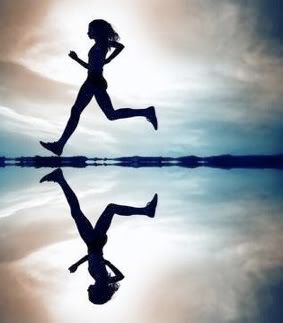Sportsmen, amateur and professional alike, are constantly engaging their bodies in routine movement. Some point or another, sportsmen would have had the experience of injury. These can range from small things like scratches to bigger ones like fractures. Runners are at least 50% more likely to sustain injuries to the leg region due to the intensive nature of the sport. A sprained ankle, a twisted joint or even a strained muscle can be quite a pain to your running plans. No runner could bare being separated from the sport for too long. The good news is, you can greatly lessen the wait. The only thing you need to remember is R.I.C.E.
Don't get me wrong. I'm not advocating rice as a diet to help recovery. The R.I.C.E. i refer to is actually an abbreviation for a few pointers to help put your recovery at a headstart. To minimise the period of recuperation from injury and maximise recovery, immediate and proper action must be taken at the onset of injury. Sowhat should we do?
Rest the affected area. Immediately stop the activity you are engaging in.
Isolate the injured area by not moving excessively. Roll up any clothing covering the area and make sure it cannot swing around freely. If possible, rest it on a comfortable support, like a sofa or cushion.
Compress the area using an icepack to reduce swelling and alleviate the pain. Typically apply pressure for 10 to 30 minutes, depending on severity and individual tolerance level. This initial step would help slow down the accumulation of liquid that cause swelling.
E levate the injured part and keep it immobilised at that position. Elevation will keep blood from flowing down to the injured part of your leg, hence slowing down the build up of pain, swelling and inflammation.
The above will serve as a quick-fix to tentatively prevent complications and reduce swelling of the injured area. However, remember that nothing can replace professional medical treatment. So please do consult your doctor as soon as possible for further medication and rehabilitation.
Don't get me wrong. I'm not advocating rice as a diet to help recovery. The R.I.C.E. i refer to is actually an abbreviation for a few pointers to help put your recovery at a headstart. To minimise the period of recuperation from injury and maximise recovery, immediate and proper action must be taken at the onset of injury. Sowhat should we do?
Rest the affected area. Immediately stop the activity you are engaging in.
Isolate the injured area by not moving excessively. Roll up any clothing covering the area and make sure it cannot swing around freely. If possible, rest it on a comfortable support, like a sofa or cushion.
Compress the area using an icepack to reduce swelling and alleviate the pain. Typically apply pressure for 10 to 30 minutes, depending on severity and individual tolerance level. This initial step would help slow down the accumulation of liquid that cause swelling.
E levate the injured part and keep it immobilised at that position. Elevation will keep blood from flowing down to the injured part of your leg, hence slowing down the build up of pain, swelling and inflammation.
The above will serve as a quick-fix to tentatively prevent complications and reduce swelling of the injured area. However, remember that nothing can replace professional medical treatment. So please do consult your doctor as soon as possible for further medication and rehabilitation.
Found my article useful? I would like to share with you a resource for better, faster running.
Thank You for reading!






Post a Comment